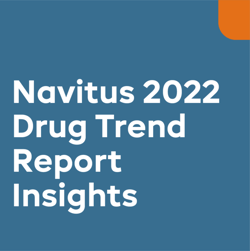Comparing one PBM to another is very complex. To add to it, many metrics are available to help you understand if you’re getting a good deal or not. However, if you focus on the wrong ones you may misinterpret the true cost.
This could mean you don’t know what you are paying until it’s too late, when you receive your invoice. Most PBM evaluations focus on rebate or savings guarantees or the cost of a single drug, but these can serve as a decoy to distract from the actual costs. Instead, plan sponsors should consider focusing on “bottom-line costs,” or what you can control to achieve lower costs.

GETTING TO YOUR TRUE COSTS
Use per member per month (PMPM) to measure spend versus cost trends, which will more accurately depict your true costs. Doing this ahead of time will take the surprise out of hidden PBM costs, and allow you to leverage lower costs with your PBM. We've identified six areas that you can use to be your source of truth when choosing a PBM partner. We will focus on three areas in this blog (all six are covered in our free e-book How to Spot Decoy Metrics to Lower Rx Benefit Costs).
Rebates Guarantees
Instead of looking at rebate guarantees, a better metric to look at is total rebates as a percentage of plan costs. Why? You may be paying more to get more rebates and yet you may not be getting all the rebates you are entitled to, which costs you more. Looking at PMPM can help you get a better picture of your rebates across all channels, measure rebate guarantees and understand rebates as a percentage of your true costs.
Clinical and Utilization Management
Prior authorization (PA) acceptance rates vary among PBMs and can have a big impact on Rx benefit plan costs. Why? Because in a rebate-focused strategy the goal may be to deny less and approve more to get more rebates. A pass-through model’s goal is to recommend less expensive options that are clinically appropriate and lower costs.
Also, take a close look at how your PBM charges you for clinical and UM programs. The question to ask, are most programs included in a single admin fee, or is your PBM potentially earning revenue from these with an add-on cafeteria plan approach? If so, a conflict of interest may exist. Looking to PMPM as a measure can help evaluate two or more PBM’s utilization management and clinical programs. It will provide insight into additional fees, high PA acceptance rates and product-driven clinical programs.
Administrative (Admin) Costs
Some PBMs charge an admin fee and some don’t. Those that charge a low or $0 fee typically have add-on costs for programs and services needed to run your benefit plan. Looking at admin fees only when comparing one PBM to another may not show you the complete picture. Instead, look for fees for additional programs needed to manage your plan and add them up. The costs may be equal to or more than another PBM’s admin fee. For example, some PBMs charge separate fees for programs such as formulary customization, prior authorization (PA), step therapy (ST), quantity limits (QL) and any add-on services. Others include this at no additional cost in your admin fee. Using PMPM to do a fair evaluation, look at total all-in actual costs by adding back in all a la carte line items. By adding these costs back in you can get to an all-in net cost.
TAKING THE SURPRISE OUT OF YOUR RX BENEFIT COSTS
Using per member per month (PMPM) or per member per year (PMPY) metrics allows you to measure your total pharmacy costs since it factors in all six PBM contract areas that contribute to your bottom-line expenses. That way you have no surprises about what you’re paying. Once you understand your costs, you can manage them more effectively.
PMPM often gets lost in the shuffle of PBM contract negotiation,
but it can be your most valuable tool in managing pharmacy costs.
LEARN MORE IN OUR E-BOOK:
How to Spot Decoy Metrics to Lower Rx Benefit Costs
E-BOOK TOPICS: 6 KEY AREAS THAT IMPACT YOUR COSTS
- Rebates (Retail, Mail and Specialty)
- Discounts (Retail, Mail and Specialty)
- Formulary Management
- Drug Pricing (Brand and Generics)
- Clinical and Utilization Management
- Administrative (Admin) Costs





